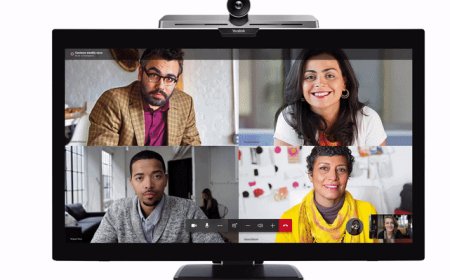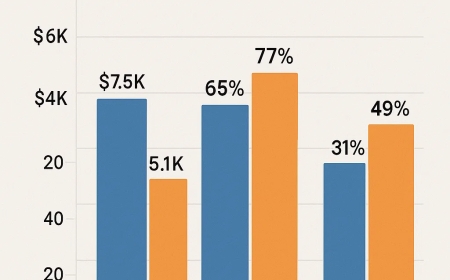Smart, Sensitive, Scalable: Designing for Inclusive Communication
This blog explores how to build inclusive communication systems that hit all three marks—and why it’s critical for impact, innovation, and integrity.

In an era of global interconnectivity, where brands, organizations, and institutions speak to audiences across continents and cultures, one thing has become clear: inclusive communication is no longer optionalits essential. But achieving this isnt just about using the right words or checking diversity boxes. Its about designing communication that is smart, sensitive, and scalable.
To truly connect in todays diverse landscape, messages must be informed by data (smart), shaped with empathy (sensitive), and able to reach diverse communities without losing meaning (scalable). This blog explores how to build inclusive communication systems that hit all three marksand why its critical for impact, innovation, and integrity.
If youre searching for a reliable PR company in Delhi, we have the expertise you need.Reach outto us at Twenty7 Inc!
The Need for Inclusive Communication
The traditional model of one-size-fits-all messaging is obsolete. Todays audiences are intersectional and culturally aware. They expect brands and institutions to:
-
Represent them authentically
-
Acknowledge social realities
-
Use language that includes, not excludes
-
Respond to feedback and adapt.
When organizations fall short, the backlash is swift and public. But when they get it right, the rewards are significantgreater trust, loyalty, engagement, and social credibility.
Inclusive communication isn't just good ethicsits good strategy.
What Does Inclusive Communication Look Like?
Inclusive communication refers to messaging that respects and reflects the diverse identities, backgrounds, languages, and lived experiences of its audience. It removes barriers to understanding and participation, ensuring no one feels excluded or tokenized.
A well-designed inclusive communication strategy is:
-
Culturally intelligent (aware of context and nuance)
-
Accessible (for people with disabilities, different literacy levels, or language needs)
-
Emotionally attuned (understands tone, trauma, and social dynamics)
-
Consistently adaptive (ready to evolve with feedback and new realities)
To achieve this, organizations must design with intention and the right framework.
The Three Pillars: Smart. Sensitive. Scalable.
Lets unpack how each of these pillars supports truly inclusive communication.
1. Smart: Data-Driven & Insight-Informed
Smart communication is rooted in research and responsive to insights. It goes beyond guesswork, gut instinct, or static demographics. Smart communicators use data to ask: Who are we talking to? What matters to them? What barriers might they face?
Tools & Techniques:
-
Audience segmentation platforms (like Audiense or Pulsar) to understand values, behaviors, and subcultures.
-
Natural Language Processing (NLP) for tone and sentiment analysis
-
Inclusive language software (e.g., Textio, Writer) to flag biased terms
-
Accessibility audits to test readability, screen reader compatibility, and cognitive load
Smart Means:
-
Knowing that Gen Z is not a monolith.
-
Understanding how Black Twitter differs from TikTok subcultures.
-
Recognizing that translation isnt localization, and that tone matters more than literal word choice.
? Smart design means doing your homework before you speak.
2. Sensitive: Human-Centered & Empathetic
Smart data alone isnt enough. Sensitivity ensures that communication lands with care, especially when addressing identities, injustices, or lived experiences.
Insensitive messagingwhether through tone-deaf language, misused imagery, or erasurecan damage relationships and reputations. Sensitivity is about empathy, nuance, and respect.
Are you seeking a trustedPR company in Bangaloreto manage your communications? Reach out to Twenty7 Inc. today!
Best Practices:
-
Use inclusive design principles (developed by organizations like Microsoft or W3C) to account for diverse needs.
-
Involve diverse creators and advisors in the content development process.
-
Test content with actual community members before launch.
-
Acknowledge mistakes and correct them with humility.
Sensitivity Means:
-
Avoiding stereotypes in visuals and language.
-
Understanding trauma-related triggers and choosing words accordingly.
-
Being mindful of global crises, national holidays, and cultural events when scheduling campaigns.
?? Sensitivity ensures that your message doesnt just say the right thingit says it in the right way.
3. Scalable: Repeatable, Localized, and Equitable
Great inclusive messaging should not be limited to a single campaign or channel. It must scale across teams, languages, and platformswithout losing integrity or empathy.
Scalability is often where inclusion falls apart. As campaigns expand, they get diluted or derailed. But scalable inclusion is possible when you build systems, not just content.
How to Scale Inclusion:
-
Use modular content systems with adaptable templates that can be localized.
-
Develop inclusive brand guidelines with examples of tone, imagery, and language dos/donts.
-
Employ AI tools with human oversight to assist with translation, tone checking, and format adaptation.
-
Build feedback loops so regional teams and target communities can surface issues in real time.
Scalable Means:
-
Ensuring your campaign reads just as inclusively in Portuguese as it does in English.
-
Training your global teams to apply inclusive standards, not just rely on HQ.
-
Having a playbook that builds inclusion into every content lifecycle stage.
? If your inclusion isnt scalable, its not sustainable.
Examples of Smart, Sensitive, Scalable Communication
? Case Study 1: Googles Year in Search
-
Smart: Based on millions of global search queries.
-
Sensitive: Highlights topics like mental health, racial justice, and climate action.
-
Scalable: Translated and localized across dozens of languages and countries.
? Case Study 2: Procter & Gambles The Talk and The Look
-
Smart: Rooted in research on racial bias and perception.
-
Sensitive: Told through powerful storytelling and lived experiences.
-
Scalable: Integrated into broader campaigns, DEI initiatives, and social impact programming.
Challenges & Solutions
Challenge: Inclusive Feels Too Vague
Solution: Define clear standards for inclusive communication (e.g., language guide, accessibility checklist, tone scale).
Challenge: Too Much Reliance on AI or Automation
Solution: Use AI for efficiency, but rely on human judgment for emotional and cultural nuance.
Challenge: Pushback from Internal Teams
Solution: Offer training and share case studies that demonstrate how inclusive communication drives engagement and ROI.
Building the Right Team
Smart, sensitive, scalable communication isnt just about toolsits about people. Build cross-functional teams that include:
-
Cultural strategists
-
Accessibility experts
-
Language localization specialists
-
Data analysts with equity experience
-
Community advisors and moderators
Diverse teams are more likely to catch blind spots, challenge assumptions, and build trust with the audiences they serve.
If you're searching for a reputablePR company in Hyderabad, were here to assist! Reach out to us at Twenty7 Inc.
Conclusion: Inclusion Is Design, Not Decoration
Inclusive communication isnt an overlayits infrastructure. It must be woven into your content strategy, team culture, technology choices, and brand values.
When communication is smart, you avoid ignorance.
When its sensitive, you avoid harm.
When its scalable, you avoid inconsistency.
And when you combine all three, you dont just avoid problemsyou build something powerful: a brand, organization, or movement that reflects the world as it is and helps shape it into what it could be.
Because in a world full of noise, the messages that resonate most are the ones where everyone feels seen, heard, and valued.
Follow these links as well.
https://twenty7inc.in/best-pr-agency-in-gurgaon/
https://twenty7inc.in/pr-agency-in-noida/
https://twenty7inc.in/pr-agency-in-chennai
https://twenty7inc.in/pr-agency-in-kolkata
https://twenty7inc.in/pr-agency-in-pune/
https://twenty7inc.in/press-release-distribution








&srotate=0)
























